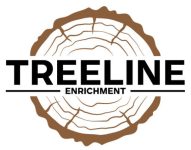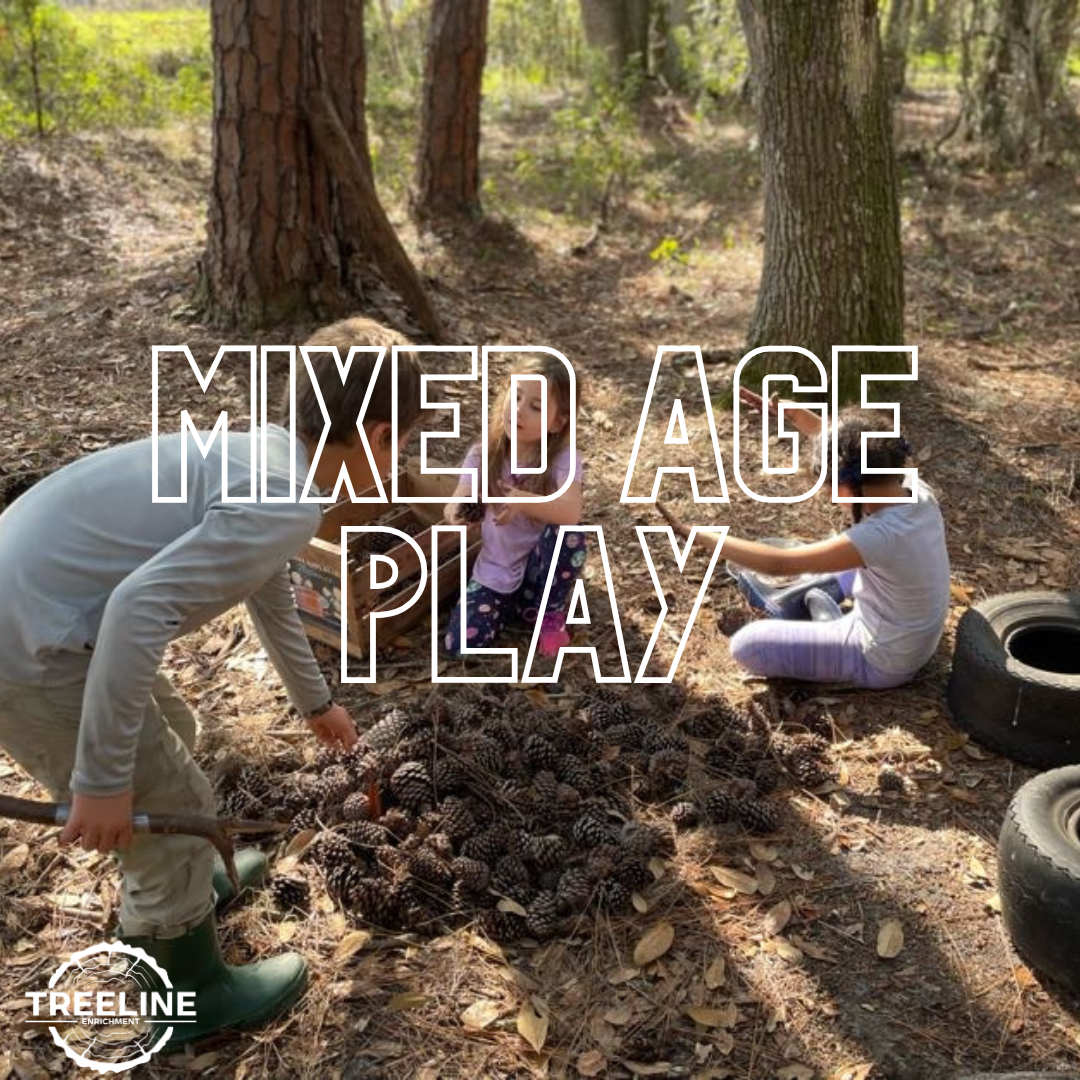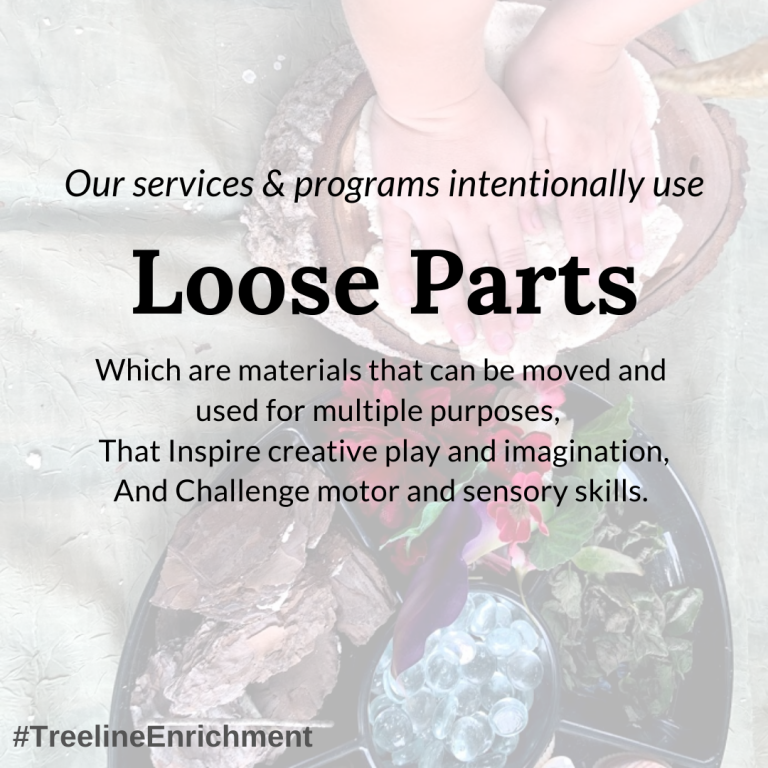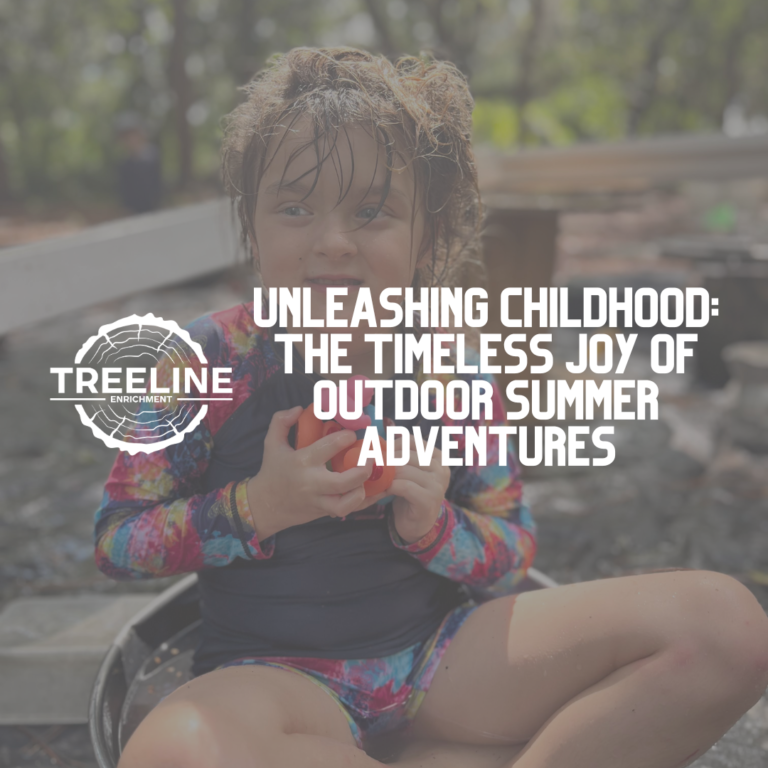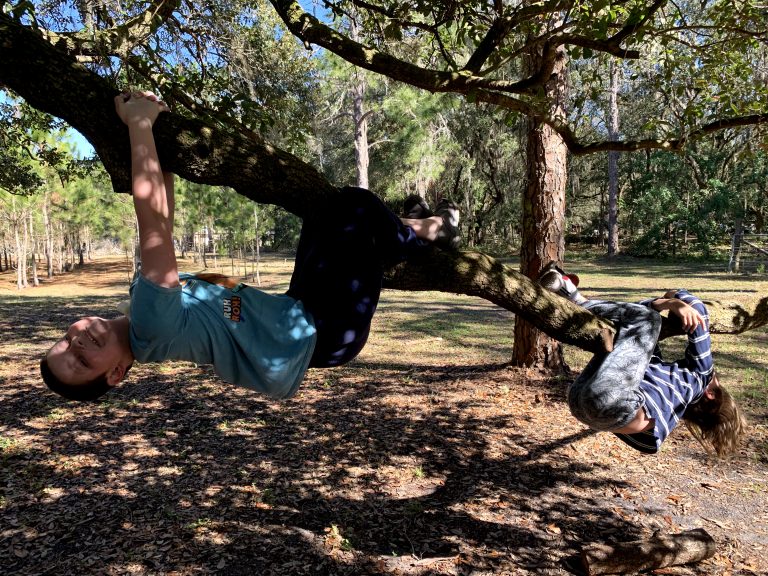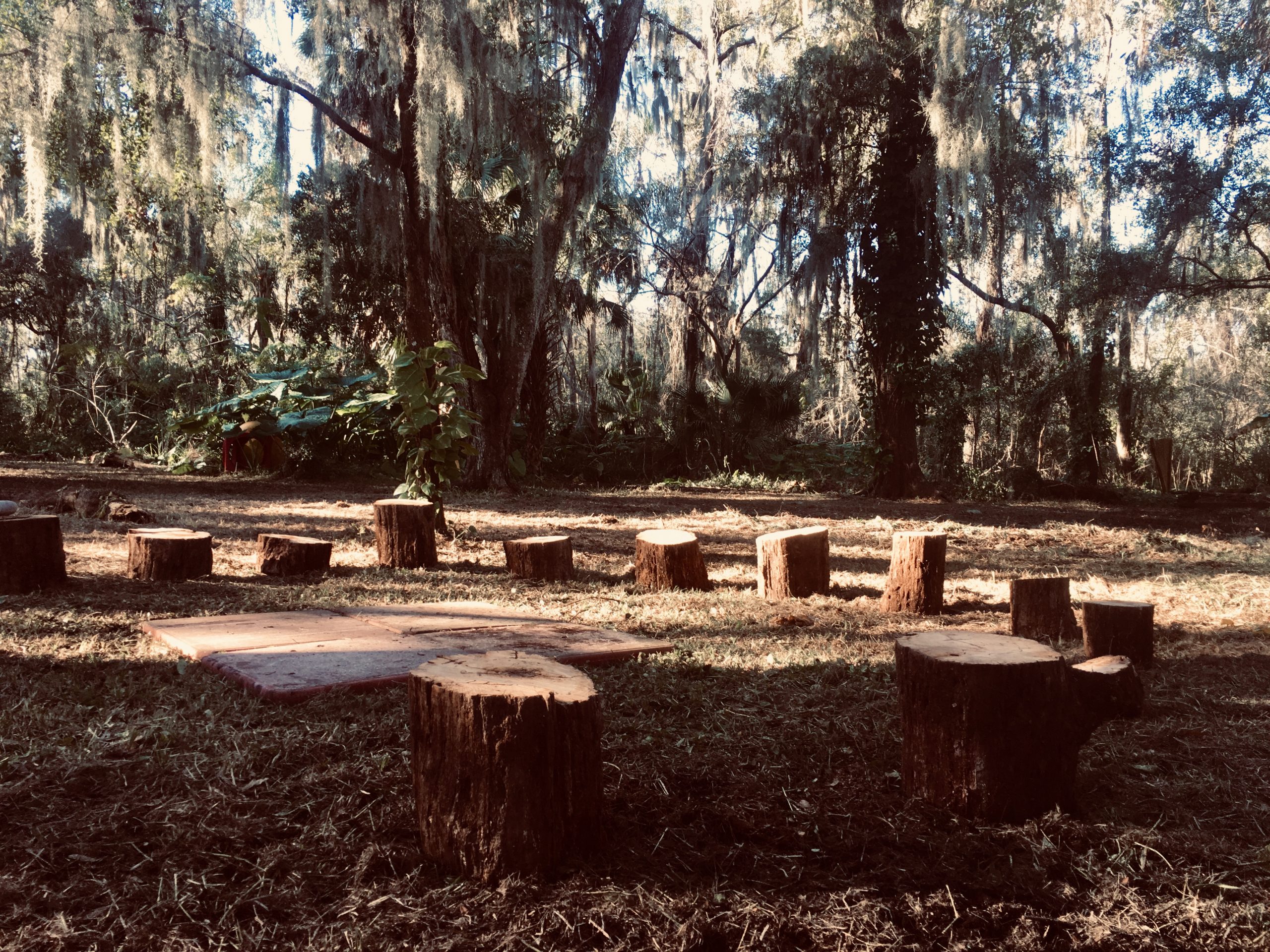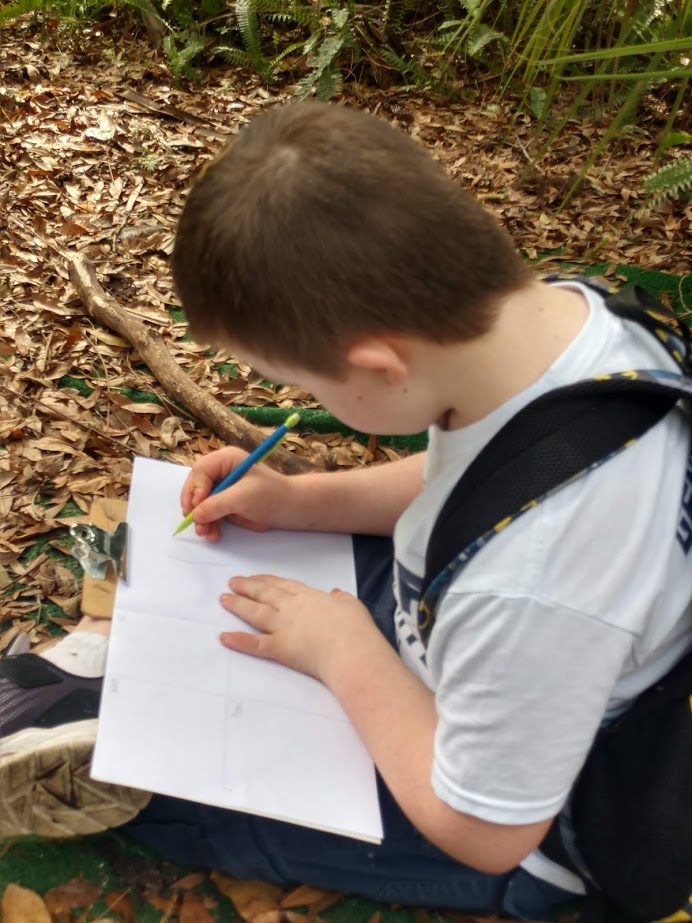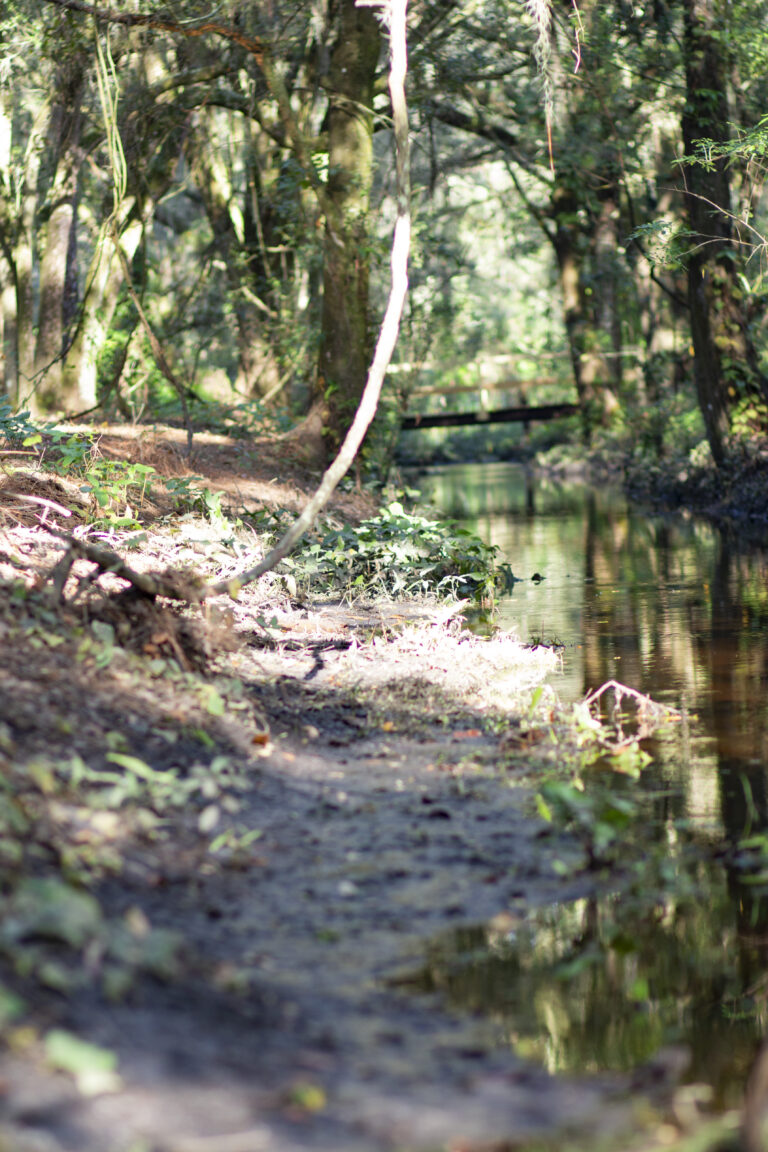Benefits of Mixed-Age Play
The Power of Play
Play is our kid’s favorite thing to do. And it should be. It is a critical vehicle for kids to learn and grow physically, socially, and emotionally for the world around them. Thankfully, kids are organically driven to play. Kids are made to move, ask questions, explore, interact, and imagine. It is what they want to and need to do.
Mixed-Age Play
So often our kids are grouped into set age ranges for play with only a 1-2 year span. But mixed-age play is actually highly beneficial for all kids involved. Children are able to learn new skills from older friends and teach new skills to younger friends. This give-and-take provides opportunities for both growth and leadership.
“Age mixed play offers advantages for learning skills, culturally relevant information, cultural routines, nurturance, and leadership that go beyond those of same-age play” – Peter Gray (Gray, 2007, p. 519)
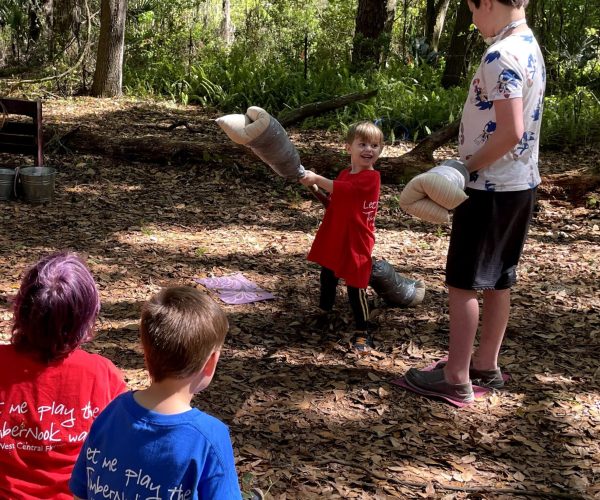
Learners
At Treeline Enrichment, we value mixed-age play and constantly observe the developmental benefits of mixed-age play for both the leaders (older kids) and learners (younger kids).
When the learners interact with older, more experienced peers (the leaders), they are given a chance to participate in more challenging tasks, which can promote cognitive maturation (Guo, Tompkins, Justice, & Petscher, 2016). Learners are inspired to climb a little higher, run a little faster, and think a little bit harder when in the presence of the older leaders. These opportunities enhance visual attention, listening skills, growth mindset, and confidence. It creates a dynamic play-scape the learners look forward to.
“Younger children benefit from age-mixed play because it introduces them to activities too complex, difficult, or dangerous for them to do alone or with just others of their own age” – Peter Gray (Gray, 2007, p. 504)
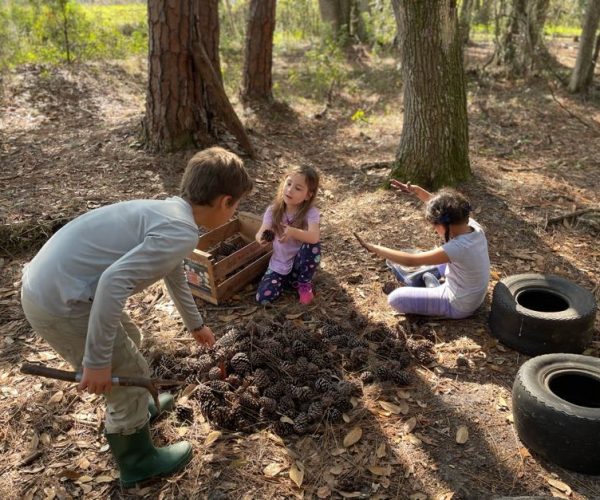
Leaders
The older kids (the leaders) often practice their leadership skills, act as mentors, and provide support and guidance to the learners (Guo, Tompkins, Justice, & Petscher, 2016). As we grow up, we start to enjoy being more knowledgeable than the next person. Mixed-age play can provide a healthy way to channel this drive by encouraging the leaders to take pride in their role with the learners. This leadership lends to perspective taking, empathy development, nurturing, and impulse control.
“Older children practice nurturance and leadership in interactions with younger ones and learn by teaching, and they are inspired by younger children to engage in activities that build their creativity and capacity for imagination.” – Peter Gray (Gray, 2007, p. 518)
To add to the beauty of mixed age play, kids will cycle between the roles of a leader and a learner throughout their childhood. Mixed-age play is wildly beneficial for kids, allowing kids to explore interactions, take perspectives, practice patience, learn organically, and develop leadership — all while engaging in the most important part of their childhood: play!
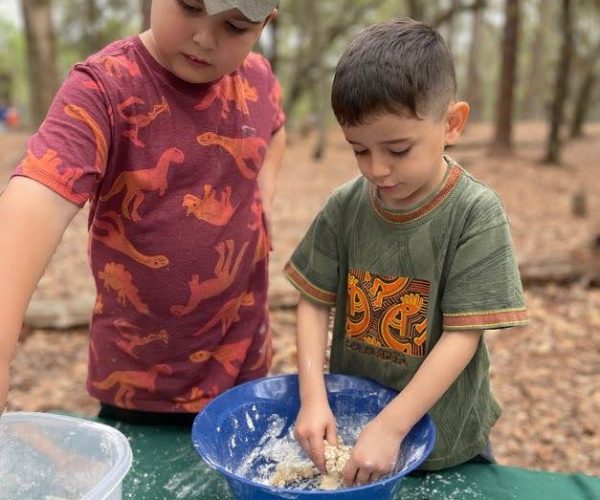
5 Tips for Supporting Mixed Age Play:
- Invite entire sibling sets over for a full-day playdate
- Lean into loose parts play instead of off-the-shelf toys
- Empower the leaders to guide the learners in new skills as they come up, such as knot tying when building a fort or teaching the rules to a new game.
- No need to force it – kids just need opportunities to interact and play with mixed age peers.
- When the kids come to you for help – consider an “I wonder” response. These statements can help to open up thinking and support the mixed age dynamic leading and learning opportunities. “I wonder who else may be able to help.” “I wonder what you all can come up with together.” “I wonder how you can find a role for everyone.” “I wonder how it would feel if I were the youngest kid trying to keep up.”
Ready for more mixed-age play opportunities for your kids?
At Treeline, we embrace and promote mixed age play opportunities. Check out Treeline’s programs and services … which are rooted in mixed-age groupings:
References
Guo, Y., Tompkins, V., Justice, L., & Petscher, Y. (2014). Classroom Age Composition and Vocabulary Development Among At-Risk Preschoolers. Early education and development, 25(7), 1016–1034. https://doi.org/10.1080/10409289.2014.893759
Gray, Peter. (2007). The Special Value of Children’s Age-Mixed Play. American Journal of Play. Vol. 3.
